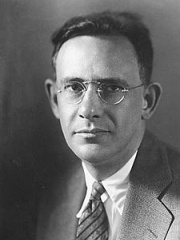
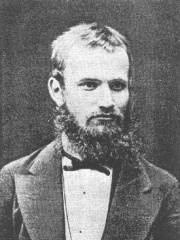
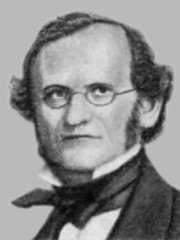
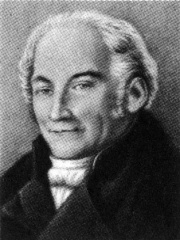
The Most Famous
LINGUISTS from Poland
Top 5
The following people are considered by Pantheon to be the most legendary Polish Linguists of all time. This list of famous Polish Linguists is sorted by HPI (Historical Popularity Index), a metric that aggregates information on a biography's online popularity.

1. Edward Sapir (1884 - 1939)
With an HPI of 70.67, Edward Sapir is the most famous Polish Linguist. His biography has been translated into 58 different languages on wikipedia.
Edward Sapir (; January 26, 1884 – February 4, 1939) was an American anthropologist-linguist, who is widely considered to be one of the most important figures in the development of the discipline of linguistics in the United States. Sapir was born in German Pomerania, in what is now northern Poland. His family emigrated to the United States of America when he was a child. He studied Germanic linguistics at Columbia, where he came under the influence of Franz Boas, who inspired him to work on Native American languages. While finishing his Ph.D. he went to California to work with Alfred Kroeber documenting the indigenous languages there. He was employed by the Geological Survey of Canada for fifteen years, where he came into his own as one of the most significant linguists in North America, the other being Leonard Bloomfield. He was offered a professorship at the University of Chicago, and stayed for several years continuing to work for the professionalization of the discipline of linguistics. By the end of his life he was professor of anthropology at Yale. Among his many students were the linguists Mary Haas and Morris Swadesh, and anthropologists such as Fred Eggan and Hortense Powdermaker. With his linguistic background, Sapir became the one student of Boas to develop most completely the relationship between linguistics and anthropology. Sapir studied the ways in which language and culture influence each other, and he was interested in the relation between linguistic differences, and differences in cultural world views. This part of his thinking was developed by his student Benjamin Lee Whorf into the principle of linguistic relativity or the "Sapir–Whorf" hypothesis. In anthropology Sapir is known as an early proponent of the importance of psychology to anthropology, maintaining that studying the nature of relationships between different individual personalities is important for the ways in which culture and society develop. Among his major contributions to linguistics is his classification of Indigenous languages of the Americas, upon which he elaborated for most of his professional life. He played an important role in developing the modern concept of the phoneme, greatly advancing the understanding of phonology. Before Sapir it was generally considered impossible to apply the methods of historical linguistics to languages of indigenous peoples because they were believed to be more primitive than the Indo-European languages. Sapir was the first to prove that the methods of comparative linguistics were equally valid when applied to indigenous languages. In the 1929 edition of Encyclopædia Britannica he published what was then the most authoritative classification of Native American languages, and the first based on evidence from modern comparative linguistics. He was the first to produce evidence for the classification of the Algic, Uto-Aztecan, and Na-Dene languages. He proposed some language families that are not considered to have been adequately demonstrated, but which continue to generate investigation such as Hokan and Penutian. He specialized in the study of Athabascan languages, Chinookan languages, and Uto-Aztecan languages, producing important grammatical descriptions of Takelma, Wishram, Southern Paiute. Later in his career he also worked with Yiddish, Hebrew, and Chinese, as well as Germanic languages, and he also was invested in the development of an International Auxiliary Language.

2. Jan Baudouin de Courtenay (1845 - 1929)
With an HPI of 65.61, Jan Baudouin de Courtenay is the 2nd most famous Polish Linguist. His biography has been translated into 39 different languages.
Jan Niecisław Ignacy Baudouin de Courtenay, also known as Ivan Alexandrovich Baudouin de Courtenay (13 March 1845 – 3 November 1929), was a Polish linguist and Slavist, best known for his theory of the phoneme and phonetic alternations. For most of his life Baudouin de Courtenay worked at Imperial Russian universities: Kazan (1874–1883), Dorpat (now Estonia) (1883–1893), Kraków (1893–1899) in Austria-Hungary, and St. Petersburg (1900–1918). In 1919–1929 he was a professor at the re-established University of Warsaw in an again independent Poland.

3. Franz Felix Adalbert Kuhn (1812 - 1881)
With an HPI of 57.80, Franz Felix Adalbert Kuhn is the 3rd most famous Polish Linguist. His biography has been translated into 15 different languages.
Franz Felix Adalbert Kuhn (19 November 1812 – 5 May 1881) was a German philologist and folklorist. Kuhn was born in Königsberg in Brandenburg's Neumark region. From 1841, he was connected with the Köllnisches Gymnasium at Berlin, of which he was appointed director in 1870. Kuhn was the founder of a new school of comparative mythology, based upon comparative philology. Inspired by Jakob Grimm's Deutsche Mythologie, he first devoted himself to German stories and legends, and published Märkische Sagen und Märchen (1842), Norddeutsche Sagen, Märchen und Gebräuche (1848), and Sagen, Gebräuche und Märchen aus Westfalen (1859). But it is on Kuhn's researches into the language and history of the Indo-Germanic peoples as a whole that his reputation is founded. His chief works in this connection are Zur ältesten Geschichte der Indogermanischen Völker (1845), in which he endeavoured to give an account of the earliest civilization of the Indo-Germanic peoples before their separation into different families, by comparing and analysing the original meaning of the words and stems common to the different languages; Die Herabkunft des Feuers und des Göttertranks (1859; new edition by Ernst Kuhn, under title of Mythologische Studien, 1886); and Über Entwicklungsstufen der Mythenbildung (1873), in which he maintained that the origin of myths was to be looked for in the domain of language, and that their most essential factors were polysemy and homonymy. Kuhn was also the editor of the Zeitschrift für vergleichende Sprachforschung auf dem Gebiete der Indogermanischen Sprachen, which was at his time the standard periodical on the subject. Kuhn died in Berlin. See obituary notice by C. F. H. Bruchmann in Bursian's Biographisches Jahrbuch (1881) and J. Schmidt in the above Zeitschrift, xxvi. n.s. 6.

4. Friedrich von Adelung (1768 - 1843)
With an HPI of 57.09, Friedrich von Adelung is the 4th most famous Polish Linguist. His biography has been translated into 16 different languages.
Friedrich von Adelung (February 25, 1768 – January 30, 1843) was a German-Russian linguist, historian and bibliographer. His best known works are in the fields of bibliography of Sanskrit language and the European accounts of the Time of Troubles in Russia.
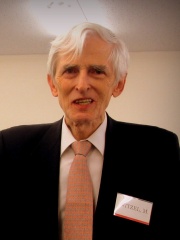
5. Michael Witzel (b. 1943)
With an HPI of 47.50, Michael Witzel is the 5th most famous Polish Linguist. His biography has been translated into 16 different languages.
Michael Witzel (born July 18, 1943) is a German-American philologist, comparative mythologist and Indologist. Witzel is the Wales Professor of Sanskrit at Harvard University and the editor of the Harvard Oriental Series (volumes 50–100). He has researched a number of Indian sacred texts, particularly the Vedas.
People
Pantheon has 5 people classified as Polish linguists born between 1768 and 1943. Of these 5, 1 (20.00%) of them are still alive today. The most famous living Polish linguists include Michael Witzel. The most famous deceased Polish linguists include Edward Sapir, Jan Baudouin de Courtenay, and Franz Felix Adalbert Kuhn.
Living Polish Linguists
Go to all RankingsDeceased Polish Linguists
Go to all RankingsEdward Sapir
1884 - 1939
HPI: 70.67
Jan Baudouin de Courtenay
1845 - 1929
HPI: 65.61
Franz Felix Adalbert Kuhn
1812 - 1881
HPI: 57.80
Friedrich von Adelung
1768 - 1843
HPI: 57.09
Overlapping Lives
Which Linguists were alive at the same time? This visualization shows the lifespans of the 4 most globally memorable Linguists since 1700.

